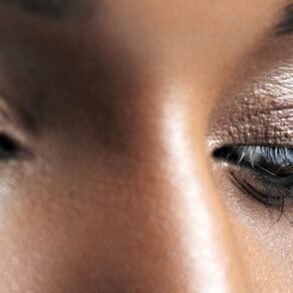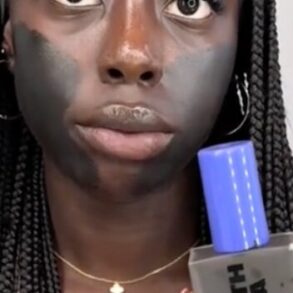August 29, 2023
4 min read
Source/Disclosures
Published by:
Disclosures:
Jagsi reports grants, personal fees and/or stock options from American Cancer Society, Doris Duke Charitable Foundation, Dressman Benzinger Lavelle Law, Equity Quotient, Greenwall Foundation, Kleinbard LLC, Komen Foundation and NIH and outside the submitted work. Odei reports no relevant financial disclosures. Please see the study for all other authors’ relevant financial disclosures.
Key takeaways:
- Women comprised only 18.6% of physician characters in movies between 1990 and 2020.
- People of color also appeared rarely in movie roles depicting physicians.
The portrayal of women as physicians in U.S. movies did not appear to accurately reflect the pool of actual U.S. female medical professionals, according to a research letter published in JAMA Internal Medicine.
Addressing the cinematic representation of women in the physician role may be instrumental in reversing entrenched stereotypes, researchers concluded.

Recounted anecdotes
“Many women physicians continue to recount anecdotes of being mistaken for nurses and stereotypes that make it harder for them to do their jobs effectively,” Reshma Jagsi, MD, DPhil, FASCO, FASTRO, Lawrence W. Davis professor, chair of the department of radiation oncology at Emory University School of Medicine, and member of the Women in Oncology Peer Perspective Board, told Healio. “My colleagues and I worry that the full talent pool of young people who should be able to envision themselves as physicians may not be exposed to diverse role models that reflect the actual makeup of the profession or the population we serve. We are interested in understanding how media shapes perceptions of who physicians are. My colleague, Bismarck Christian Odei, MD, and I had the idea of looking at popular movies and the ways physician characters are represented, which led to the current report.”
The study was initiated to scrutinize often-overlooked factors that shape public perceptions and expectations about what a physician should look like, Odei, assistant professor in the department of radiation oncology at Huntsman Cancer Institute at University of Utah, told Healio.
“It’s easy to overlook the profound influence that on-screen representation can have on individuals from underrepresented demographics. To give a personal example, my own decision to enter the medical field was inspired by the portrayal of Ben Carson, MD, a black physician, in a movie,” Odei said. “Consequently, we are committed to broadening the way medical professionals are depicted in media, recognizing that such change requires engagement from screenwriters and filmmakers. We hope our study will spark dialogue and inspire tangible changes in media portrayals.”
The cross-sectional study included 1,226 movies with 2,295 physician characters.
Researchers used references of physicians in plot summaries, keywords and casting credits to search IMDb.com for movies released between 1990 and 2020. They coded movie and physician characteristics, including gender of physician characters, writers, directors and producers, and assigned binary gender categories using names, corresponding photographs and film scenes. Similarly, they categorized race and ethnicity of lead physician characters as either white or other race and ethnicity by visual inspection.
Researchers used the age of each actor at the time of movie release to estimate lead physician character age and manually reviewed the portrayed age of the physician character.
They additionally used a two-sided Cochran-Armitage test to evaluate time trends for the percentage of women physician characters, and Fisher exact and chi-square tests as well as bivariate and multivariable logistic regression models to identify factors associated with a movie depicting at least one woman physician character.
Female physician characters
Overall, women composed 18.6% (n = 426) of physician characters compared with 81.4% (n = 1,869) men.
Results showed that the percentage of female physician characters significantly increased per decade, from 16.6% from 1990 to 1999 to 18.6% from 2000 to 2009 and 20.8% from 2010 to 2020 (P = .04).
However, researchers found that the majority of movies (71.5%) depicted physicians exclusively as men, whereas movies that portrayed at least one woman physician character ranged from 27.8% to 29.1% per decade studied.
Moreover, of the 61.3% of movies that depicted only one physician, men composed 83.1%. Conversely, movies that depicted multiple physicians included at least one female physician character (46.8% vs. 16.9%; P < .001).
In addition, movies with lead physician characters appeared more likely to include at least one woman compared with those with physicians as less visible roles (46.5% vs. 26.9%; P < .001).
Of the 99 movies (8.1%) with a physician character lead, 22 (22.2%) included a female physician character (median age, 38 years; 90.9% white) vs. 77 (77.8%) that included a male physician character (median age, 44 years; 90.9% white).
Results of multivariable analyses showed factors associated with including at least one female physician character included higher physician count (OR = 4.41; 95% CI, 3.36- 5.79), physician as the lead (OR = 1.71; 95% CI, 1.09- 2.68), higher proportion of women writers (OR = 1.65; 95% CI, 1.03-2.65) and movie rating of R vs. movie rating of G or PG (OR = 0.58; 95% CI, 0.34-0.99).
“We also found that people of color were vanishingly rare in movie roles depicting physicians,” Jagsi said. “Moreover, women’s representation didn’t increase in the way that women’s participation in the medical profession did during the past 3 decades — women comprise more than half of today’s medical students in the U.S., and more than one-third of practicing physicians. However, among physician characters in movies, even in the most recent movies we studied, the percentage of women among physician characters appeared more reflective of the demographics of the profession more than one-quarter of a century ago.”
Researchers reported limitations of the study, including the potential that the data set did not capture all instances of physicians depicted in movies, the binary description of gender and race, and subjectivity in assigning demographic characteristics.
Disheartening results
“You can’t be what you can’t see,” Jagsi told Healio. “It was particularly disheartening to see how infrequently women and people of color were physician characters in G- and PG-rated movies intended for those who might be starting to define their professional aspirations. We plan to continue research to understand what factors might contribute to entrenched stereotypes that make it more difficult for current doctors to do their jobs and the full talent pool for future doctors to envision themselves in that key role.”
For more information:
Reshma Jagsi, MD, DPhil, FASCO, FASTRO, can be reached on X (Twitter): @reshmajagsi.
Bismarck Christian Odei, MD, can be reached at bismarck.odei@hci.utah.edu.









